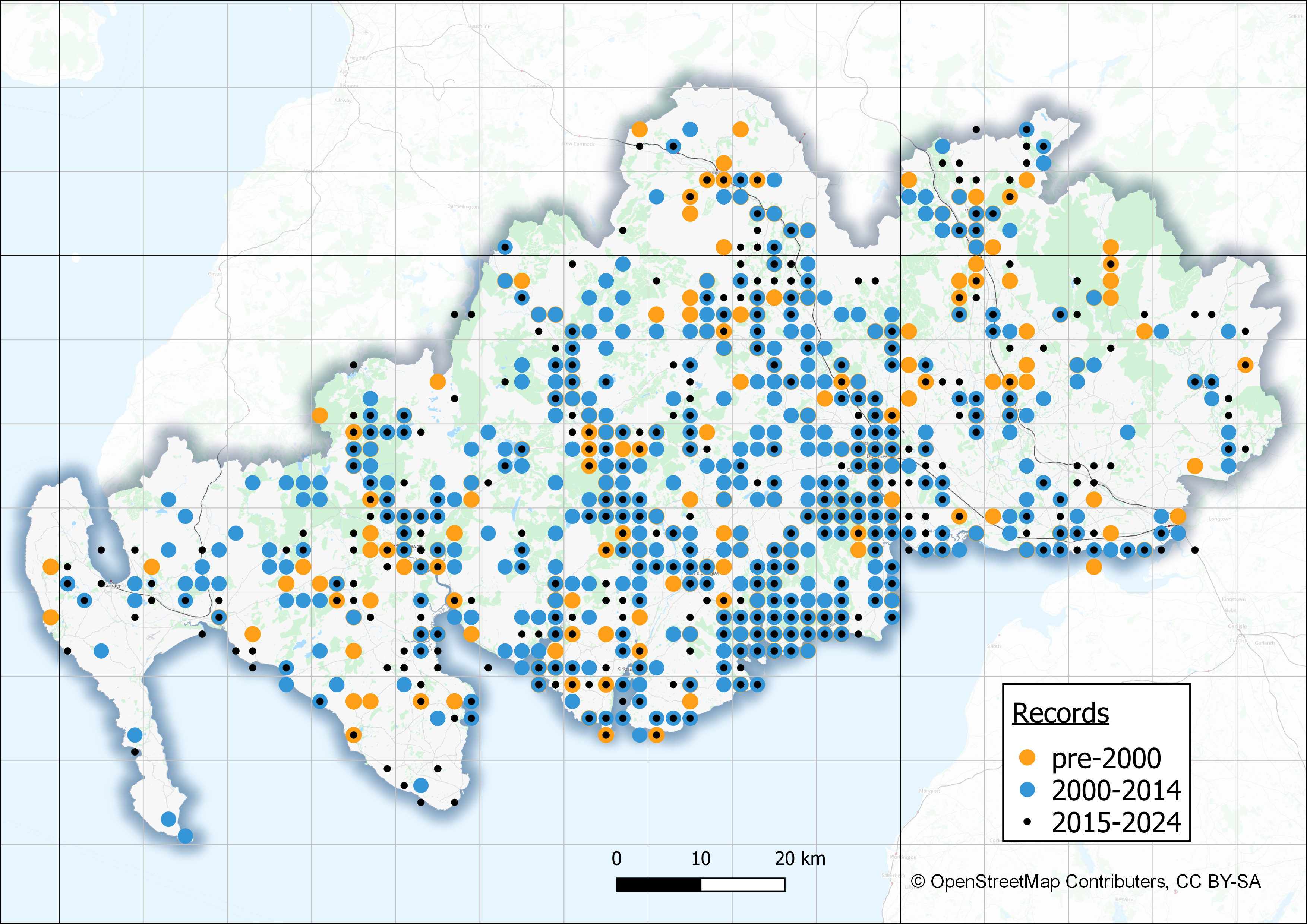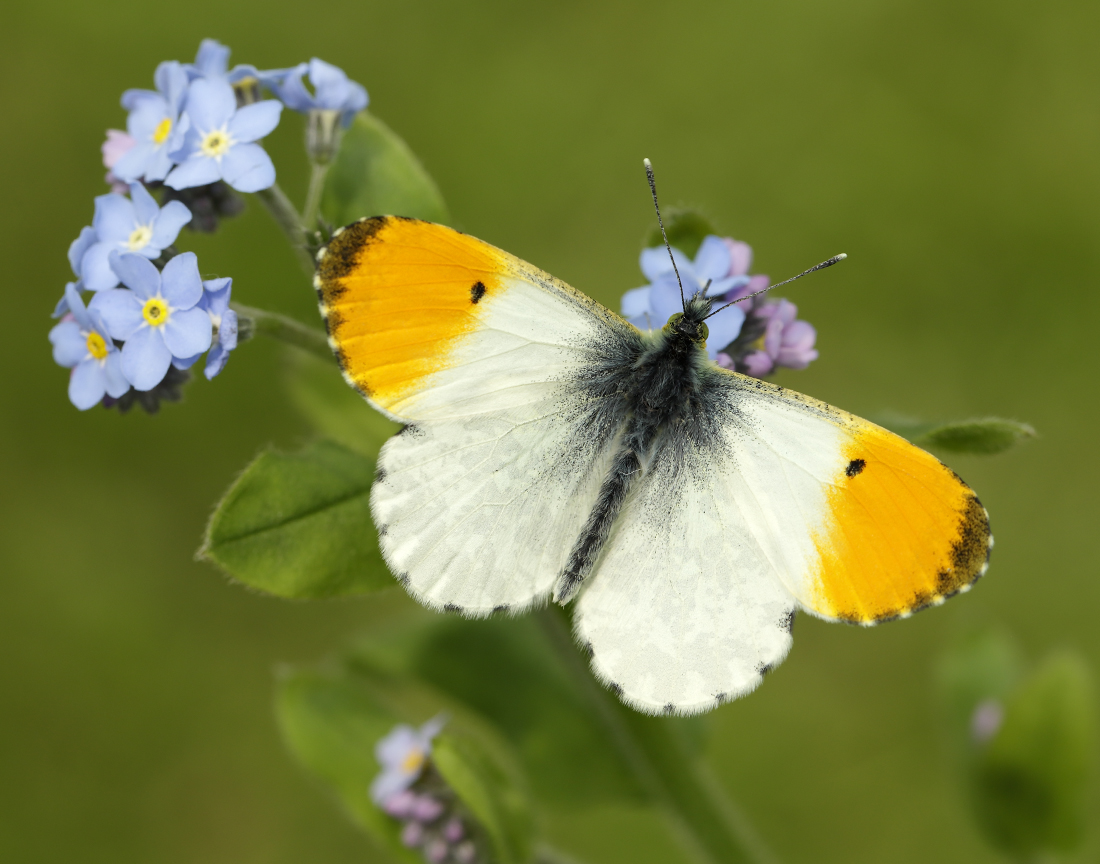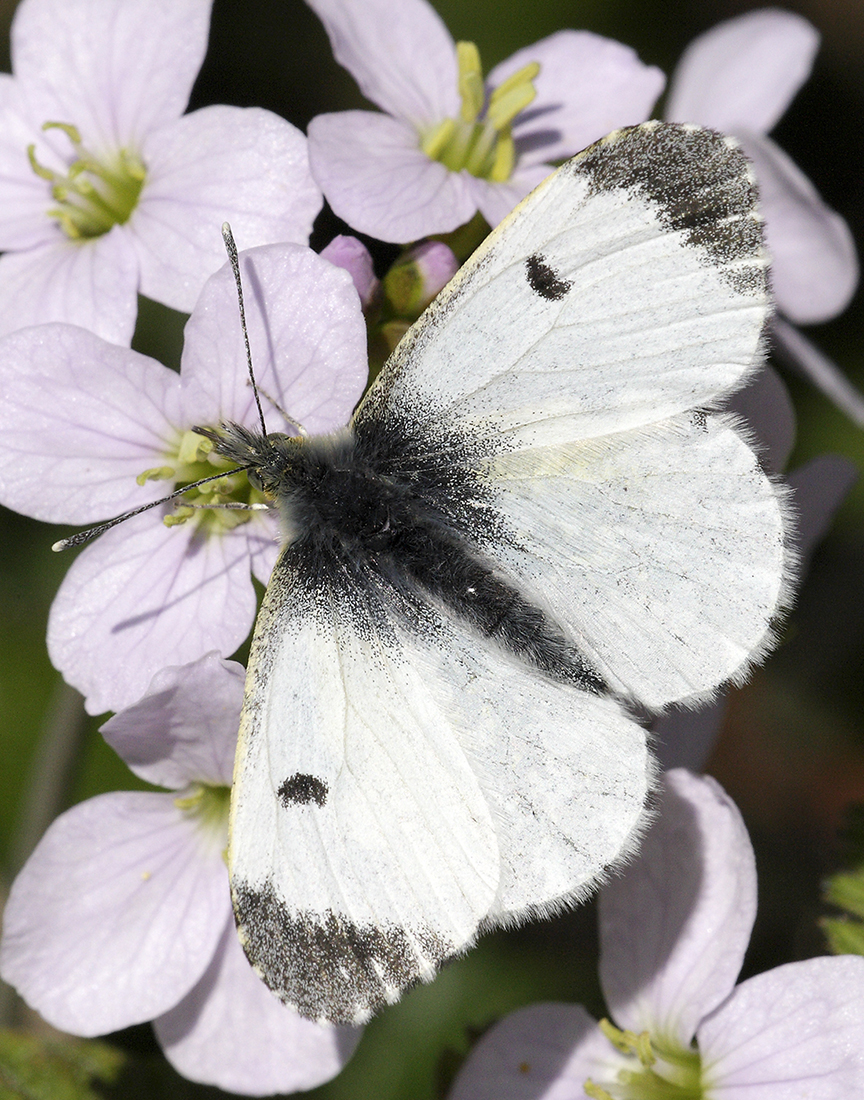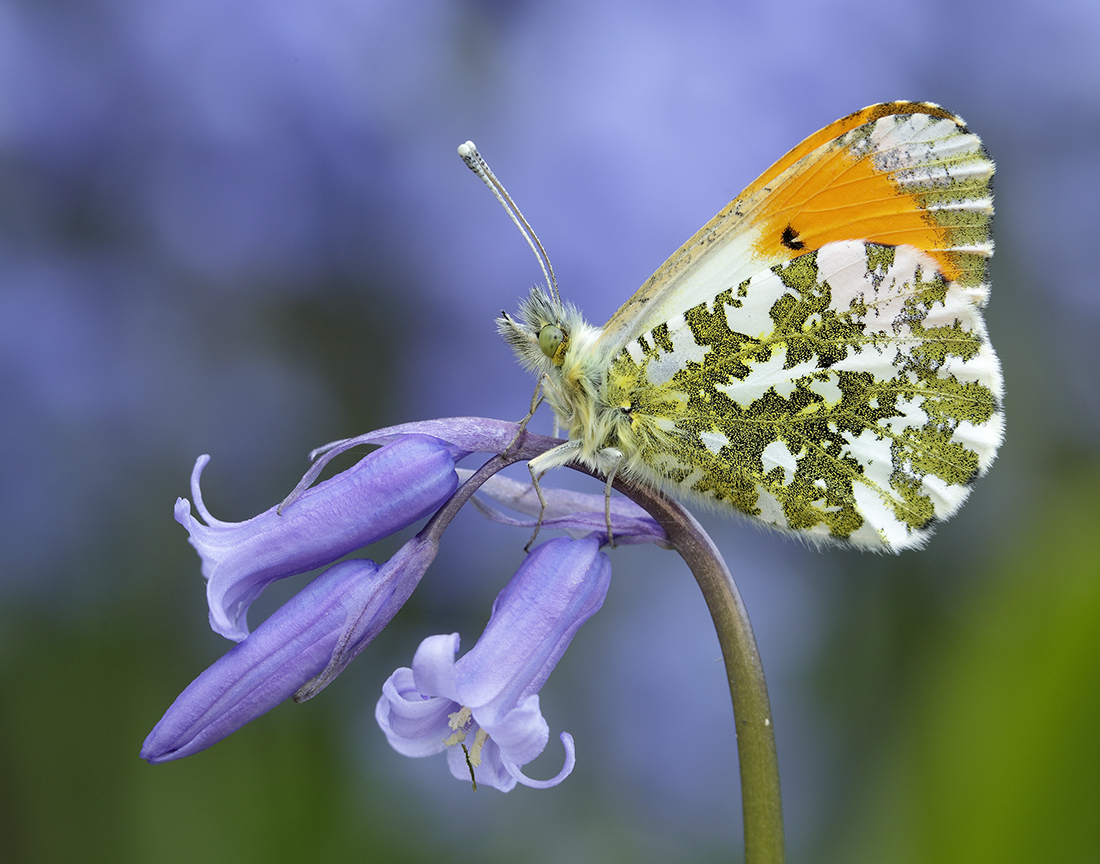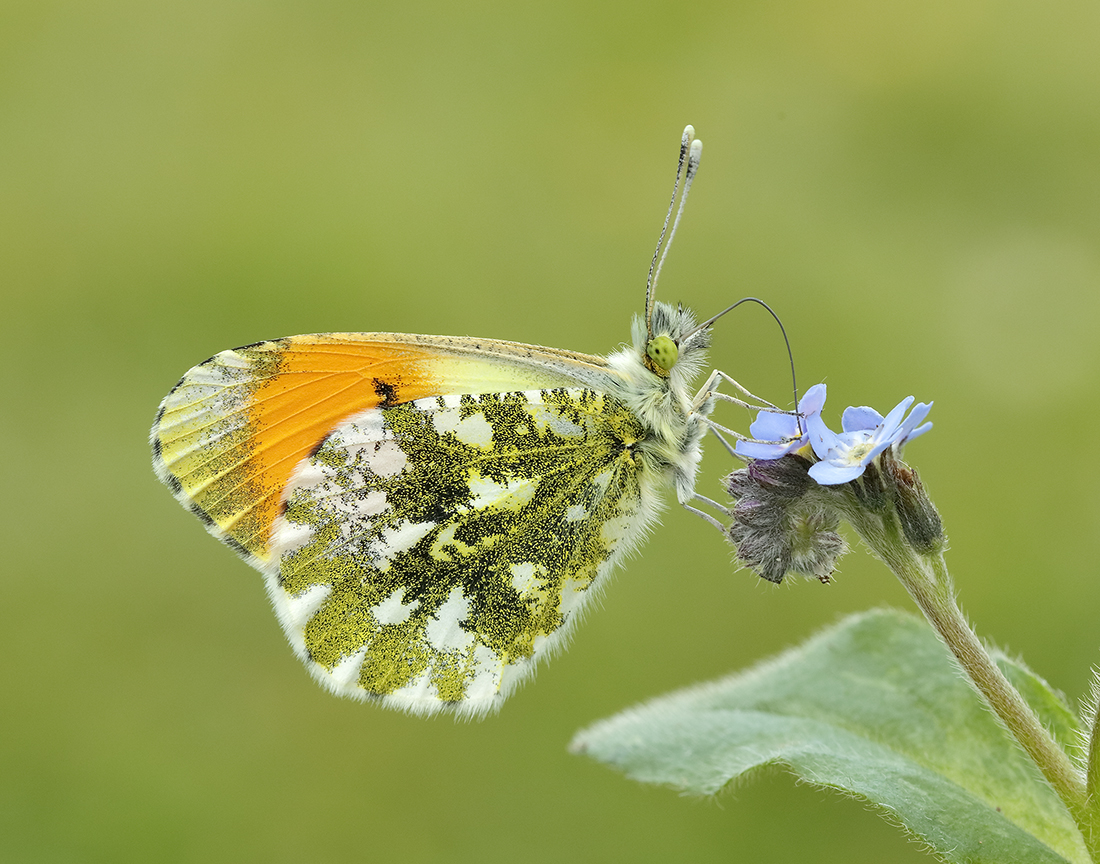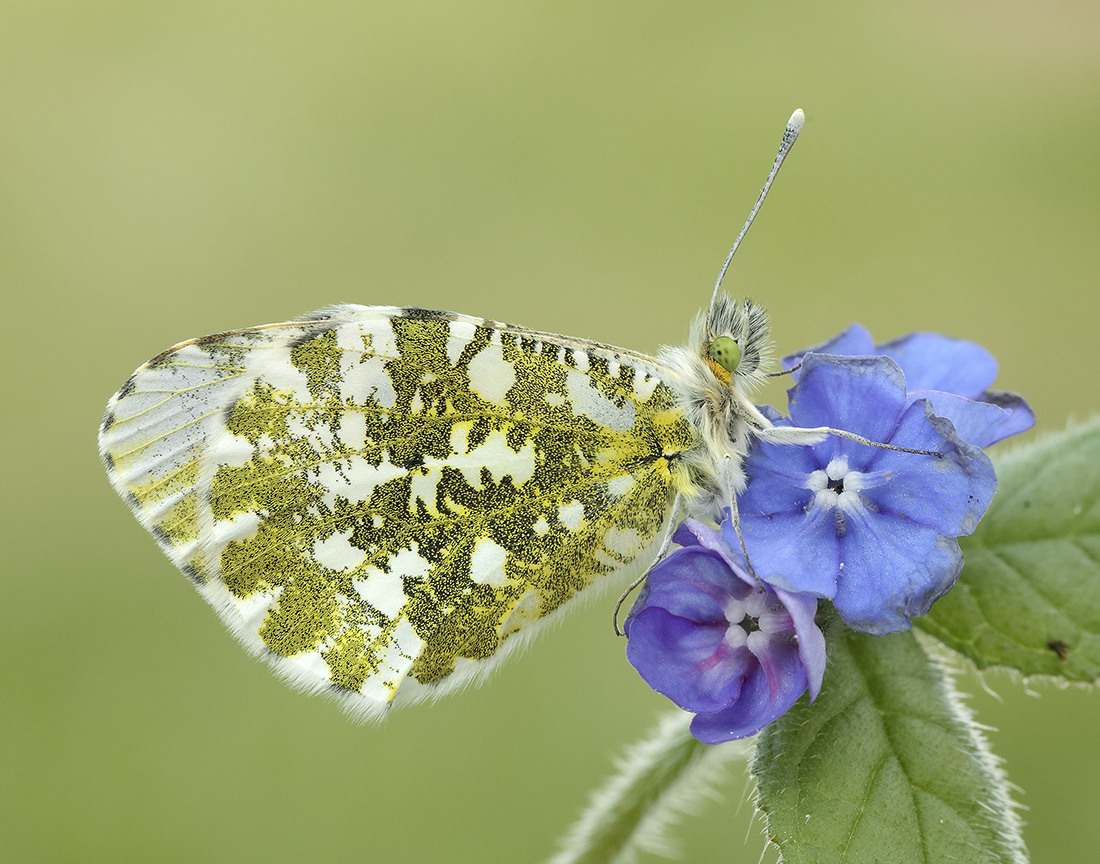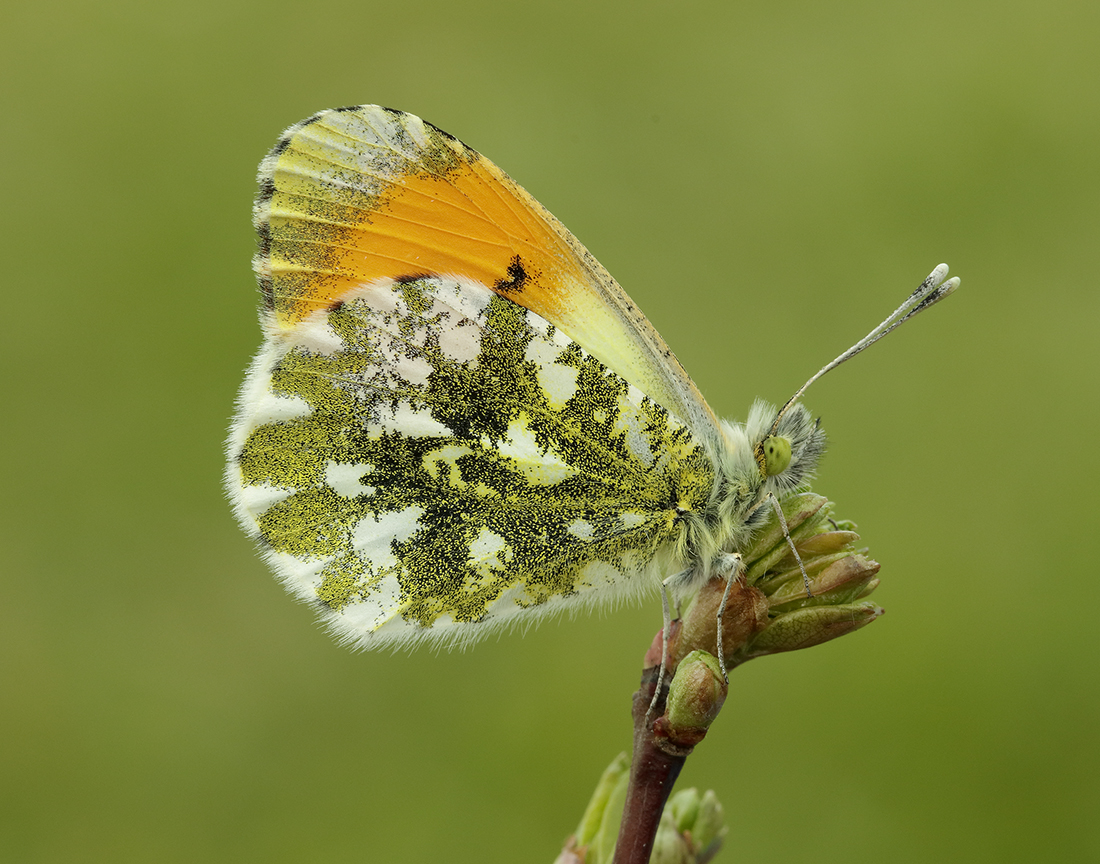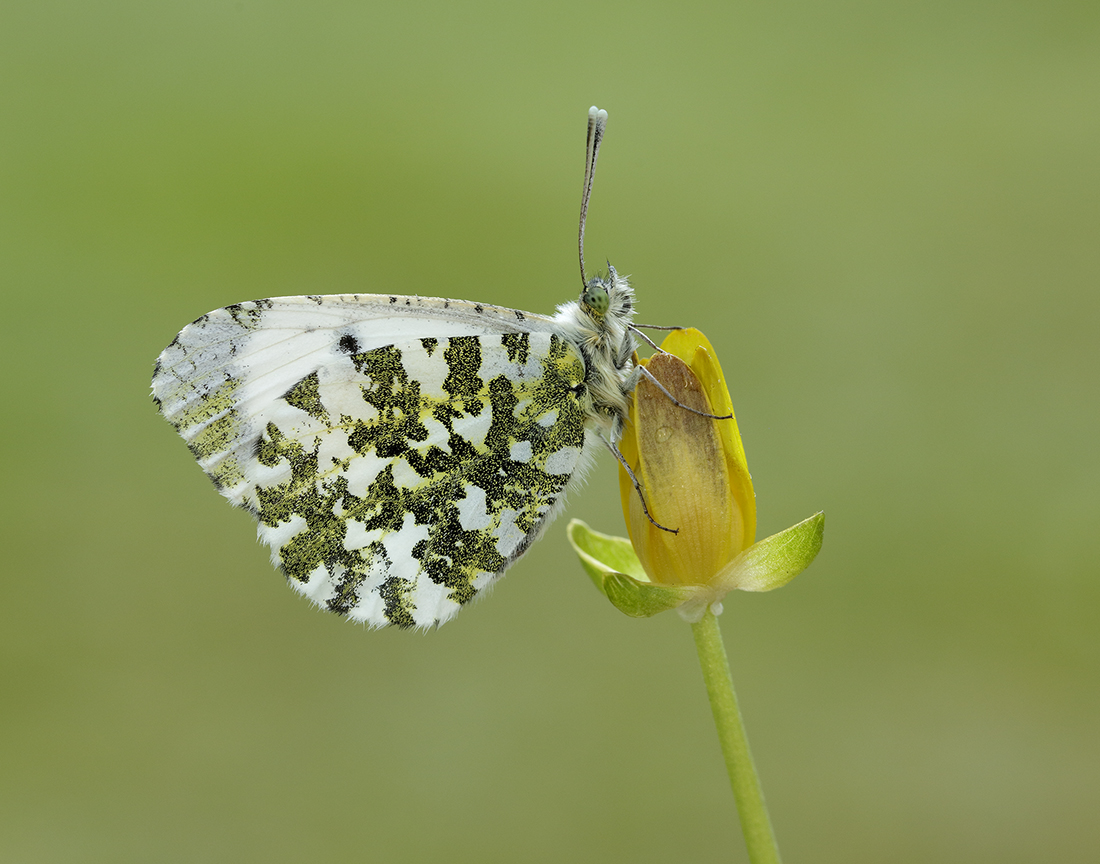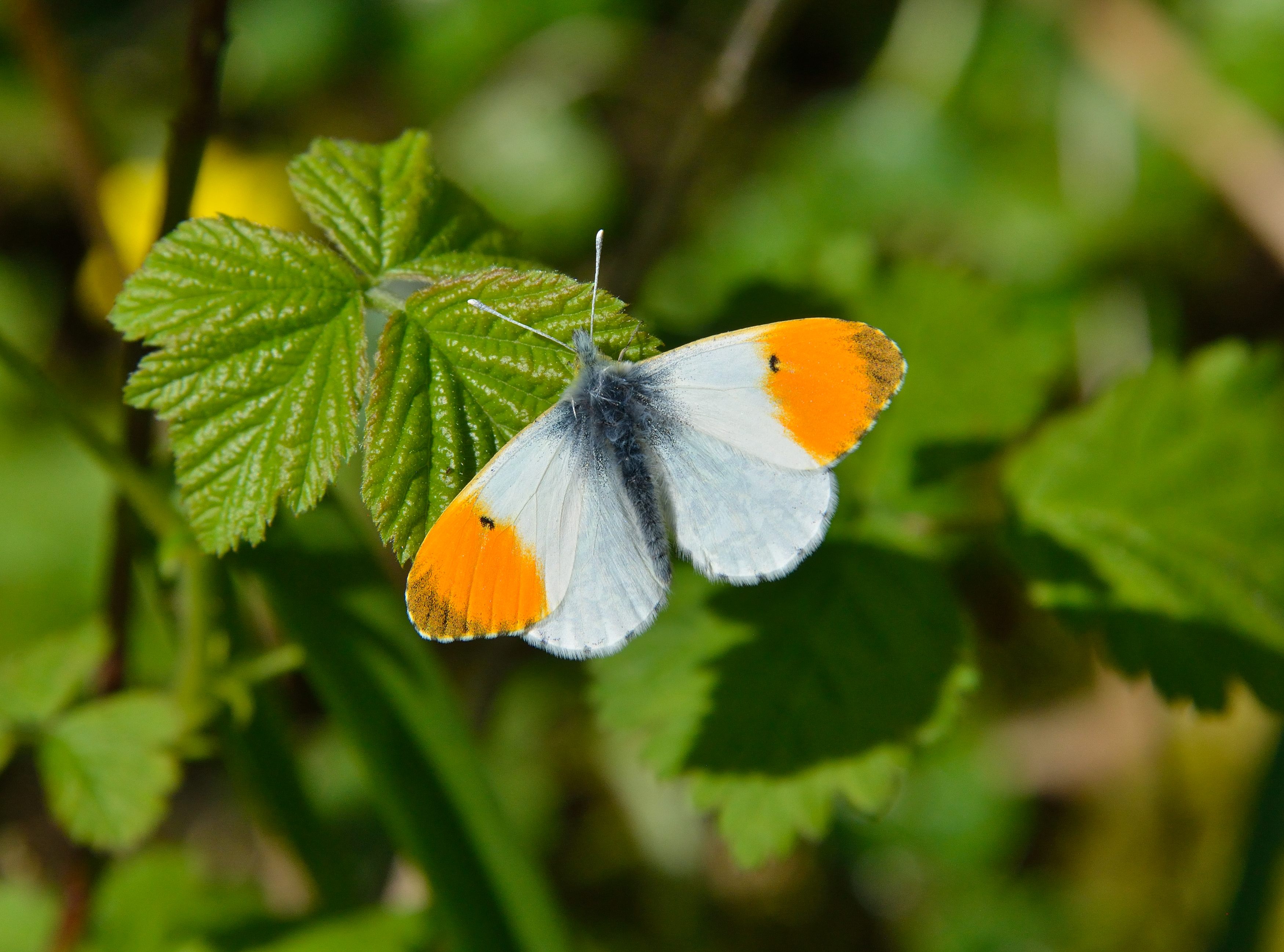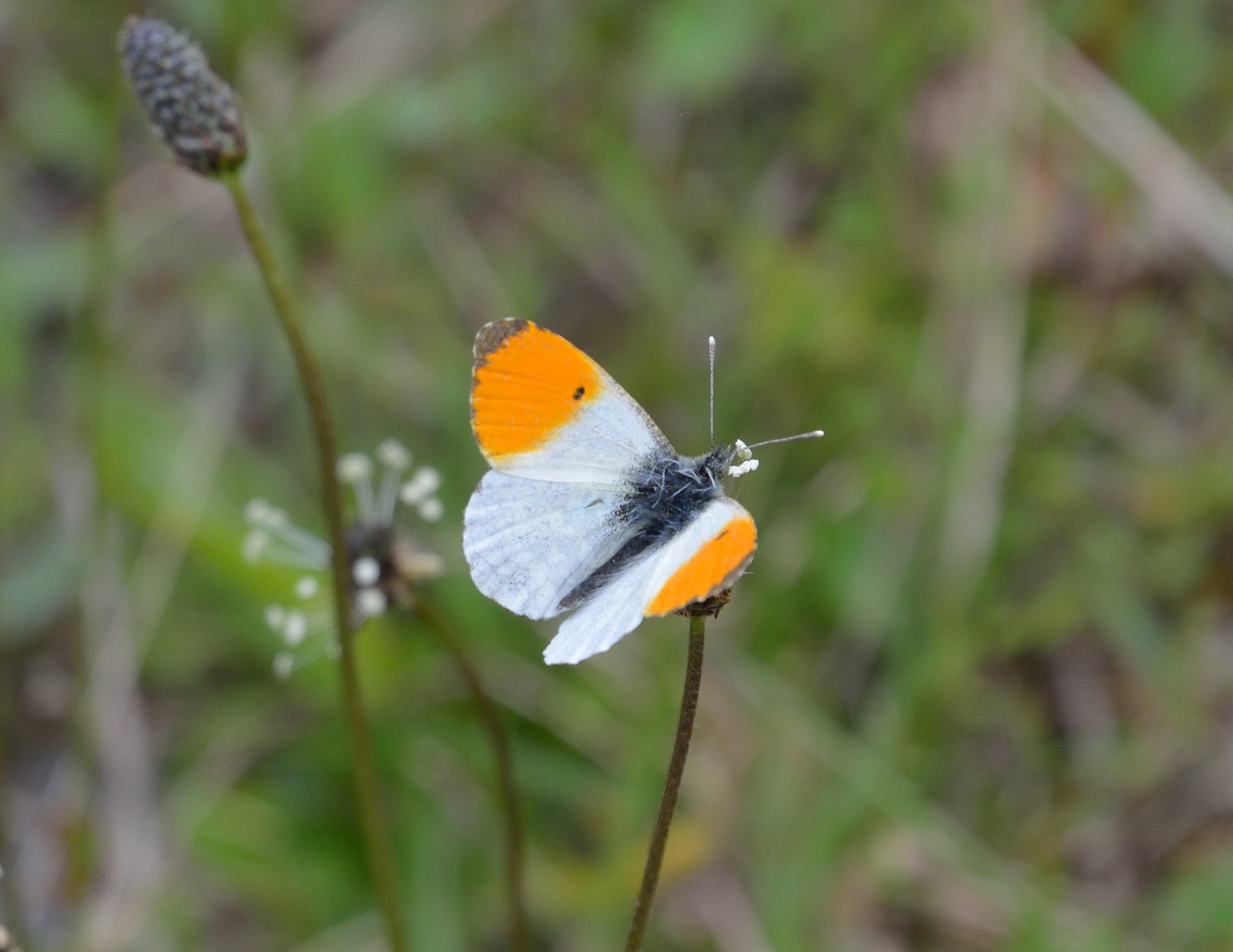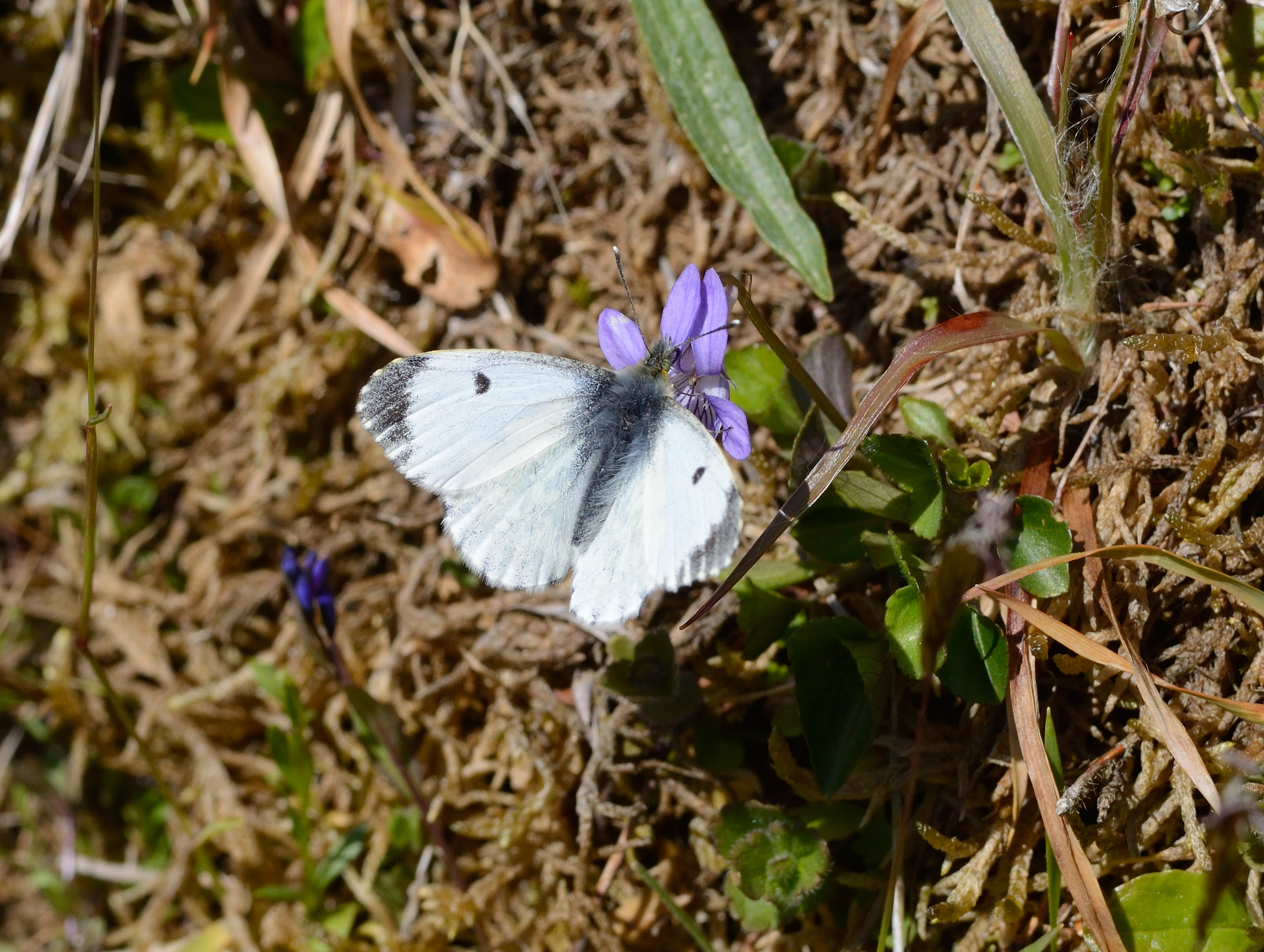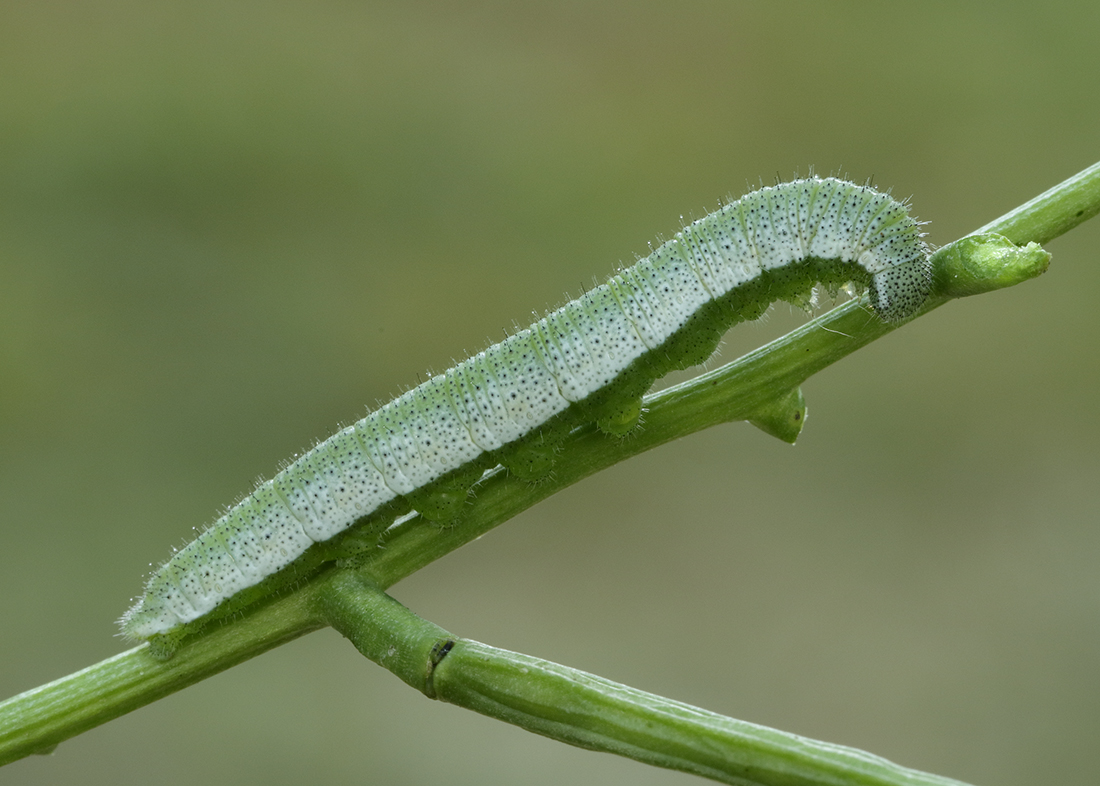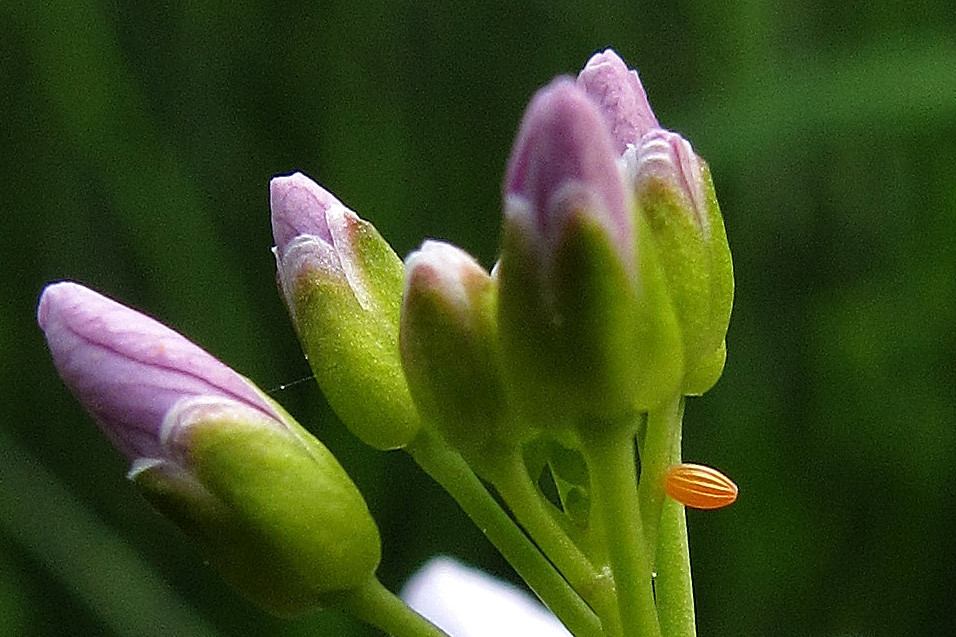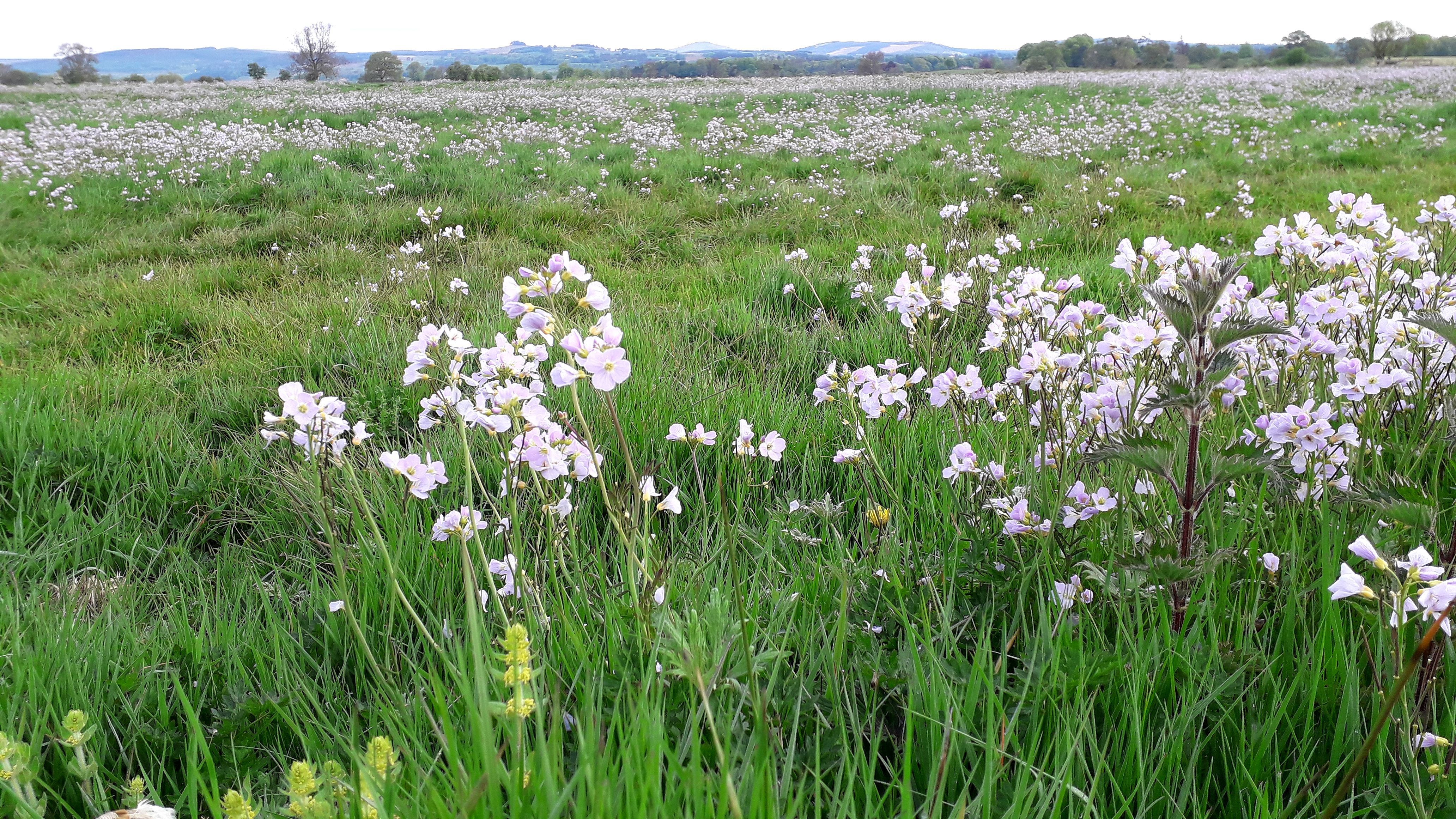The Orange-tip is spreading and increasing in abundance, presumably due to the warming climate It may also be benefitting from the less frequent cutting of roadside verges, allowing its caterpillar foodplants to grow to maturity.
Identification
Males are unmistakable with their bright orange wing-tips, but females have no orange so could be confused with Small or Green-veined Whites. However, Orange-tips have more rounded wing tips and mottled green undersides that can be seen faintly through the upper wings.
The females are relatively weak fliers and are lees often seen. Their conspicuous orange eggs can be easily found on the caterpillars’ food plants.
Life cycle & flight period
One generation a year, the adults peaking between the end of April and the end of May. Overwinters as a pupa.
Very rarely, in years of exceptional weather, a few second brood adults might be seen in August. Orange-tips, like Large Whites, are conspicuous butterflies but they are distasteful to birds because their bodies contain mustard oils derived from their foodplants.
Larval foodplant
The most important foodplants for the Orange-tip are probably Cuckooflower (also called Lady’s Smock), which grows best in damp grassland, and Garlic Mustard which does better in drier situations e.g. along hedgerows and roadside verges. The females can lay eggs on several other crucifers, and in gardens will often use Honesty and Dame’s Violet. In Mabie Forest Orange-tips use the prostrate plants of Smith’s Pepperwort that grow in the middle of some of the forestry tracks.
The eggs are laid beneath the flower heads where they feed on the developing seeds. It has been suggested that the caterpillars do not do so well on Honesty, and perhaps this is because they are more conspicuous. As they only feed on the seeds and seed pods, on smaller plants the caterpillars face the risk of running out of food so the females usually select larger plants for their eggs.
Habitats
The Orange-tip is mostly associated with open woodlands and hedgerows and damp grasslands, but is also often seen in urban parks and gardens.

